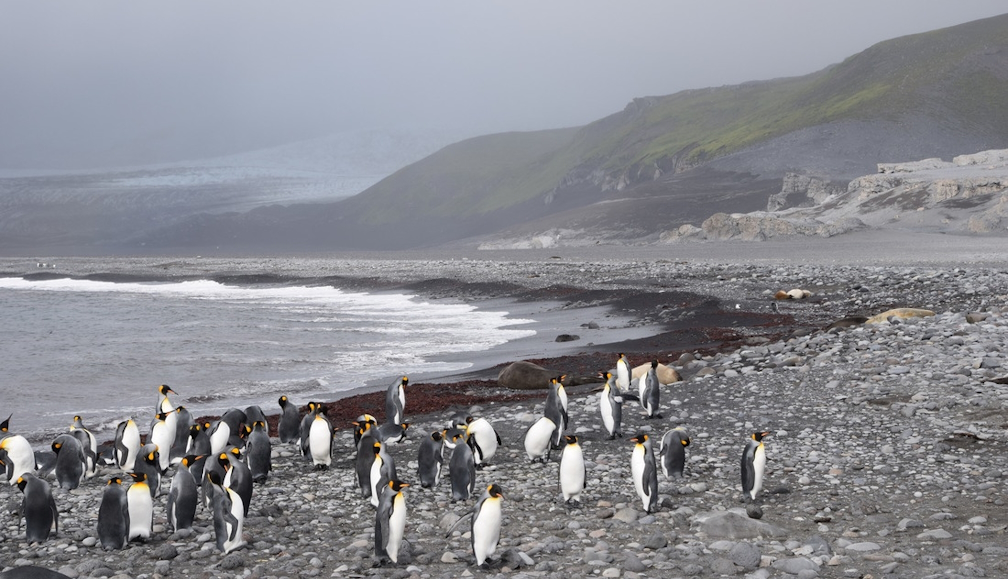Australia will protect a vast swathe of the Southern Ocean, but squanders the chance to show global leadership
- Written by Andrew J Constable, Adviser, Antarctica and Marine Systems, Science & Policy, University of Tasmania

The Albanese government has today declared stronger protections[1] for the waters around Heard Island and McDonald Islands, one of Australia’s wildest, most remote areas. The marine park surrounding the islands will be extended by 310,000 square kilometres, quadrupling its size.
Announcing the decision, Environment Minister Tanya Plibersek said Heard Island and McDonald Islands – about 4,000 kilometres southwest of Perth – are a “unique and extraordinary part of our planet. We are doing everything we can to protect it.”
But the announcement, while welcome, is a missed opportunity on several fronts.
Important areas around the islands remain unprotected, despite a wealth of scientific evidence pointing to the need for safeguards. On this measure, the government could have done far more to protect this unique wildlife haven.
A special place
Heard Island and McDonald Islands are a crucial sanctuary for marine life in the Southern Ocean. The land and surrounding waters support a food chain ranging from tiny plankton to fish, invertebrates, seabirds and marine mammals such as elephant seals and sperm whales.
Both the marine and land environments of the islands are globally recognised for their ecological significance, and include species not found elsewhere in Australia.
In 2002, a marine reserve was declared over the islands and parts of the surrounding waters. The reserve was extended in 2014.
The expansion announced today means most waters around the islands have protection. The new safeguards primarily extend to foraging areas[2] for seals, penguins and flying birds such as albatrosses.
The expansion covers some deep water areas but excludes important deeper water locations including underwater canyons and seamounts, and a feature known as Williams Ridge[3].
This is an important oversight that compromises the strength of the expanded protections.
The protections do not extend to an important undersea feature known as Williams Ridge.The science is clear
In March this year, my colleagues and I released a report[4] showing existing protections for Heard Island and McDonald Islands were no longer adequate and should urgently be expanded.
The report drew on more than two decades’ of research and new scientific understanding. In particular, we found climate change was warming the waters around the islands, posing risks to marine life such as the mackerel icefish.
The icefish lives in shallow water and is an important food source for other animals. To maintain the islands’ biodiversity as the climate warms, we recommended extending the existing marine reserve to cover more shallow waters in the east, and protecting currently unprotected deeper waters.
Today’s announcement does not protect these deeper waters. This is a major shortcoming. Our report showed deeper water areas to the east of Heard Island are significant to the region’s biodiversity, and to its ability to cope with warmer seas under climate change.
The government says its decision came after extensive consultation with a range of parties – including the fishing industry and conservation groups.
Heard Island and McDonald Islands host valuable fisheries for Patagonian toothfish and mackerel icefish. The footprint of fishing operations has expanded over the past 30 years.
The fishery for mackerel icefish uses a range of methods including bottom trawling. This is the only fishery[5] in the Southern Ocean to use bottom trawling methods. This is a damaging fishing technique that uses towed nets to catch fish and other marine species on or near the seabed.
Read more: These extraordinary Australian islands are teeming with life – and we must protect them before it's too late[6]
A range of non-target fish species, especially skates, are accidentally caught by the fisheries around Heard Island and McDonald Islands. Skates are a vulnerable species because they are slow to grow and mature. Indicators suggest skate bycatch is too high.
The new measures should have prevented fishing in some deeper waters to reduce pressure on this and other vulnerable species. In particular, bottom trawling should have been prohibited.
As climate change worsens and fishing activity continues, the area must be managed to take account of these dual pressures. The management should also maximise the resilience of species imperilled by climate change, such as mackerel icefish – a cold-adapted species not found anywhere else in Australia’s marine zone.
My colleagues and I proposed deep-sea protections over about 30% of the existing fishing grounds around Heard Island and McDonald Islands. Catch limits would not have been adjusted, and the fisheries were not likely to have been substantially affected.
The decision to allow fishing, including bottom-trawling, in some areas of high conservation value means other measures will be needed to protect marine life in deep areas under pressure from climate change.
An opportunity missed
Today’s announcement follows a decision by the government last year to triple the size[9] of Macquarie Island Marine Park. The move was largely in keeping with the science, and both protected important biodiversity regions and provided for fisheries.
The protection awarded to Heard Island and McDonald Islands falls short of this standard. It fails to protect vulnerable marine species from climate change and fishing, and squanders a chance for Australia to show international leadership.
References
- ^ declared stronger protections (minister.dcceew.gov.au)
- ^ foraging areas (www.sciencedirect.com)
- ^ Williams Ridge (www.csiro.au)
- ^ report (research-repository.uwa.edu.au)
- ^ only fishery (www.saveourmarinelife.org.au)
- ^ These extraordinary Australian islands are teeming with life – and we must protect them before it's too late (theconversation.com)
- ^ Wikimedia/Tristannew (commons.wikimedia.org)
- ^ CC BY (creativecommons.org)
- ^ triple the size (parksaustralia.gov.au)

















